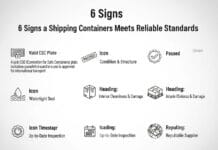Setting up an offshore company can sound complicated at first glance. All those jurisdictions, legal terms, and bank account requirements can feel like too much. But once you break it down, it’s not as difficult as it seems. I went through this process myself for a small consulting project, and what surprised me most was how logical the whole system is once you know the steps. Let me walk you through it from a personal point of view, step by step, as someone who learned through trial, research, and a few mistakes.
1. Deciding Why You Need an Offshore Company
The first question you should ask is simple: why do I need it? Offshore companies are not just for big corporations or people hiding millions. They’re tools for privacy, asset protection, and international business flexibility. For instance, I wanted a structure that would allow me to invoice clients globally without setting up multiple entities in each country.
Think of it like this: an offshore company separates your personal finances from your business operations. It gives you a layer of protection against lawsuits or local tax exposure, depending on your home country’s rules. That said, it’s crucial to get professional advice before making decisions that involve cross-border taxes. A good accountant or corporate service provider can save you from future complications.
When choosing the right jurisdiction, look at what you want to achieve. If you’re after confidentiality, countries like Belize or Seychelles might fit. If you need reputation and stability, places like the British Virgin Islands, Cayman Islands, or Hong Kong are better choices. I remember reading forums where business owners argued endlessly over which country was “best,” but the truth is: it depends on your goals.
2. Choosing the Jurisdiction and Company Type
Once you know why you’re forming an offshore company, the next logical step is where. Jurisdictions vary by tax laws, regulations, and setup speed. Some are quick and inexpensive; others are stricter but carry more international credibility.
When I first registered mine, I compared three options: Seychelles, BVI, and Cyprus. Seychelles was cheap and fast but not ideal for opening bank accounts. Cyprus had a better reputation but higher maintenance fees. I ended up going with BVI, which balanced both. It took about seven days from application to official registration.
Here’s what you need to look at before deciding:
- Tax structure: Does the jurisdiction offer zero or low corporate tax?
- Reporting requirements: Some places require annual filings, others don’t.
- Confidentiality: How public are ownership details?
- Banking access: Will international banks easily accept your company?
You also need to choose the type of entity. The most common is the International Business Company (IBC). It’s flexible, simple to maintain, and recognized worldwide. Some entrepreneurs prefer Limited Liability Companies (LLCs) or Limited Partnerships, depending on the nature of the business.
Keep in mind that offshore doesn’t automatically mean illegal or shady. It simply means your company is registered in a different jurisdiction from where you live or operate.
3. Registering the Company – Step by Step
Now comes the part everyone worries about: the registration itself. Don’t stress. If you work with a professional firm that specializes in offshore setups, the process is quite straightforward. I used a service provider that handled almost everything. They filled out forms, submitted documents, and liaised with local authorities.
Here’s how the process generally goes:
- Select a service provider: Choose a company formation agency or legal firm that operates in your chosen jurisdiction. A reputable provider ensures compliance with local laws and handles the paperwork efficiently.
- Submit required documents: You’ll usually need a copy of your passport, proof of address, and sometimes a business plan or reference letter. Everything must be certified, so make sure documents are valid and up to date.
- Choose a company name: Check if it’s available and not restricted by local naming rules. Some jurisdictions forbid words like “bank,” “trust,” or “insurance” unless you have licenses.
- Appoint directors and shareholders: You can use your own name or hire nominee directors for extra privacy.
- Define share structure: Most offshore companies have a basic share capital, such as 50,000 shares at $1 each, but only a small portion needs to be issued.
- File incorporation documents: The provider submits everything to the local registry. Once approved, you’ll receive the Certificate of Incorporation and corporate documents.
- Open a bank account: This part can take the longest. Banks require compliance checks, and many prefer clients with clear business activities and verifiable income sources.
During my setup, the trickiest step was opening a business bank account. I had to provide contracts, website screenshots, and invoices to prove the company had a legitimate purpose. Once approved, I received multi-currency access, which made invoicing clients from different countries much easier.
4. Maintenance, Compliance, and Practical Tips
After incorporation, most people think the process is over. That’s a mistake I almost made myself. Offshore companies need regular upkeep, even if the requirements are minimal.
You’ll typically have to renew your company each year by paying a government fee and service charge to your registered agent. Skipping that can lead to penalties or, worse, removal from the corporate register. Always set a reminder for renewal dates.
Another thing is accounting. Even if your company doesn’t pay tax locally, some jurisdictions now require record-keeping or economic substance filings. It’s not complicated, but it has to be done correctly. Your provider can guide you on whether you need to file anything.
A few practical tips from personal experience:
- Keep digital copies of every document. Certificates, resolutions, share registers—everything. It’s frustrating when a bank asks for a copy you misplaced two years ago.
- Avoid free email services for official communication. Use a professional domain email to maintain credibility with banks and clients.
- Don’t use offshore structures for hiding funds or tax evasion. Authorities around the world exchange information under FATCA and CRS frameworks. Transparency is key.
- Renew your registered office and agent annually. They are legally required for your company to remain valid.
- Plan ahead for banking. Regulations tighten often. Some banks may refuse offshore entities, while others specialize in them. Research before choosing a jurisdiction.
Having an offshore company gives flexibility. It lets you operate globally, hold assets, or run online businesses without the administrative hassle of multiple domestic entities. For example, I used mine to manage affiliate income from several countries without having to register in each one separately.
Over time, I learned to treat the offshore company as a tool for structure and organization rather than secrecy. It simplifies operations when used responsibly. Once the setup is complete and you understand the renewal rhythm, the maintenance becomes routine.
Registering an offshore company isn’t as mysterious as it sounds. It’s about paperwork, planning, and working with the right people. The hardest part is the first time as once you’ve gone through the steps, it all clicks.
If I had to sum it up: clarity and compliance are what matter. Pick the jurisdiction that fits your purpose, gather the right documents, and rely on a trusted service provider to handle the formalities. The rest follows naturally.
What started as a confusing idea for me turned into a valuable asset that helps me operate internationally with structure and peace of mind. Offshore doesn’t have to mean distant or complicated; it just needs to be done properly and transparently.





